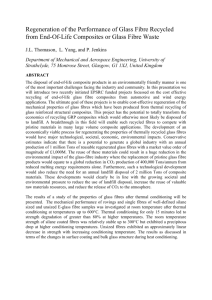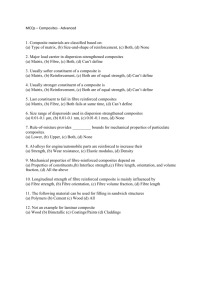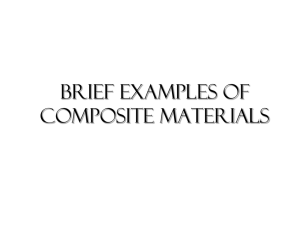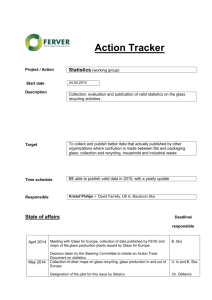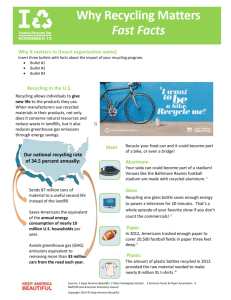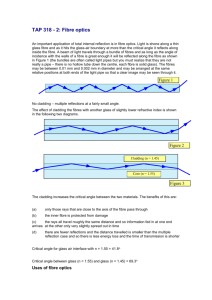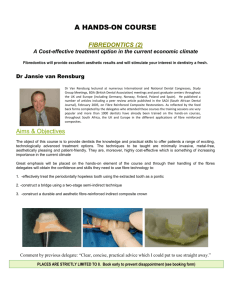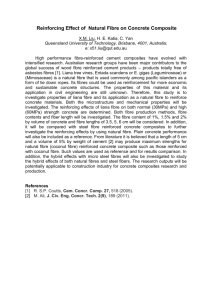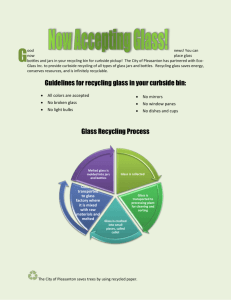Regeneration of thermally recycled glass fibre for cost
advertisement
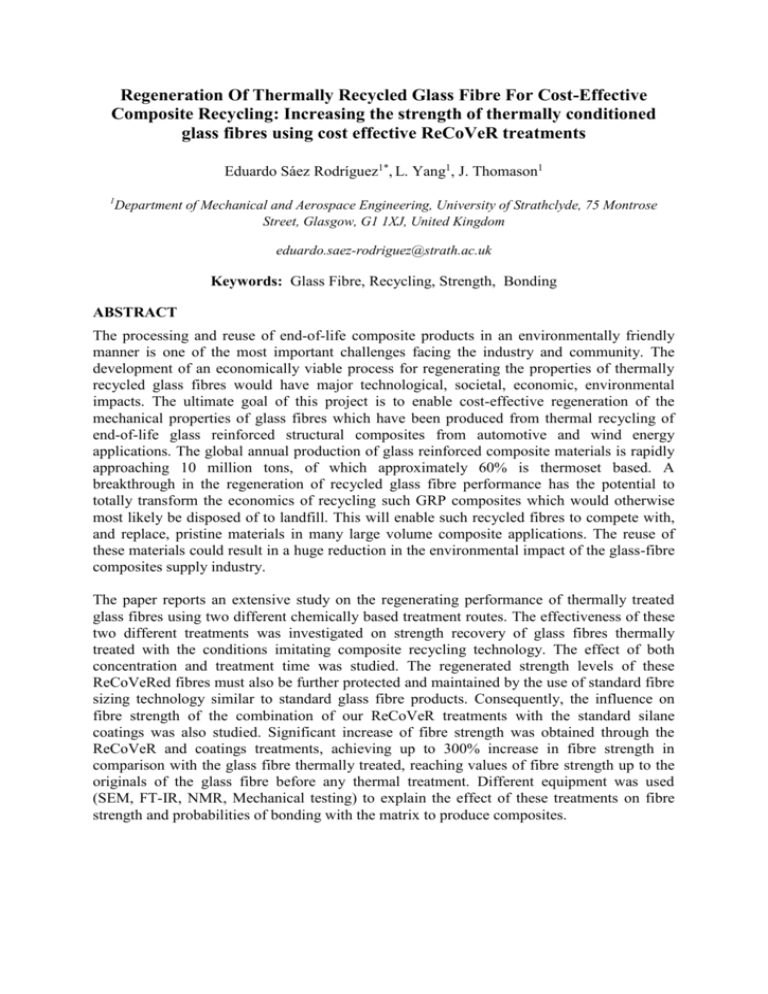
Regeneration Of Thermally Recycled Glass Fibre For Cost-Effective Composite Recycling: Increasing the strength of thermally conditioned glass fibres using cost effective ReCoVeR treatments Eduardo Sáez Rodríguez1*, L. Yang1, J. Thomason1 1 Department of Mechanical and Aerospace Engineering, University of Strathclyde, 75 Montrose Street, Glasgow, G1 1XJ, United Kingdom eduardo.saez-rodriguez@strath.ac.uk Keywords: Glass Fibre, Recycling, Strength, Bonding ABSTRACT The processing and reuse of end-of-life composite products in an environmentally friendly manner is one of the most important challenges facing the industry and community. The development of an economically viable process for regenerating the properties of thermally recycled glass fibres would have major technological, societal, economic, environmental impacts. The ultimate goal of this project is to enable cost-effective regeneration of the mechanical properties of glass fibres which have been produced from thermal recycling of end-of-life glass reinforced structural composites from automotive and wind energy applications. The global annual production of glass reinforced composite materials is rapidly approaching 10 million tons, of which approximately 60% is thermoset based. A breakthrough in the regeneration of recycled glass fibre performance has the potential to totally transform the economics of recycling such GRP composites which would otherwise most likely be disposed of to landfill. This will enable such recycled fibres to compete with, and replace, pristine materials in many large volume composite applications. The reuse of these materials could result in a huge reduction in the environmental impact of the glass-fibre composites supply industry. The paper reports an extensive study on the regenerating performance of thermally treated glass fibres using two different chemically based treatment routes. The effectiveness of these two different treatments was investigated on strength recovery of glass fibres thermally treated with the conditions imitating composite recycling technology. The effect of both concentration and treatment time was studied. The regenerated strength levels of these ReCoVeRed fibres must also be further protected and maintained by the use of standard fibre sizing technology similar to standard glass fibre products. Consequently, the influence on fibre strength of the combination of our ReCoVeR treatments with the standard silane coatings was also studied. Significant increase of fibre strength was obtained through the ReCoVeR and coatings treatments, achieving up to 300% increase in fibre strength in comparison with the glass fibre thermally treated, reaching values of fibre strength up to the originals of the glass fibre before any thermal treatment. Different equipment was used (SEM, FT-IR, NMR, Mechanical testing) to explain the effect of these treatments on fibre strength and probabilities of bonding with the matrix to produce composites.

